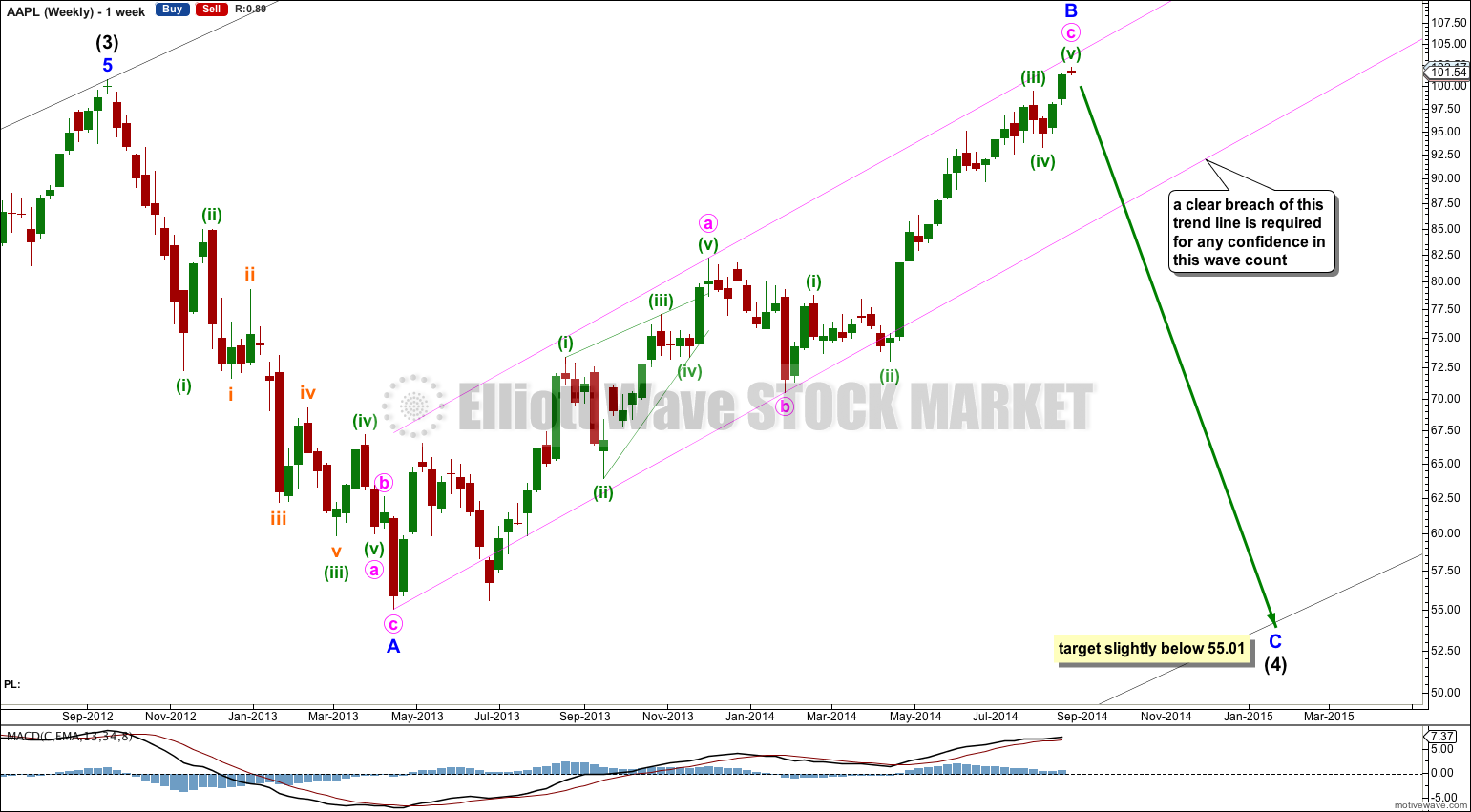The wave count was invalidated with a new high above 100.72.
Click on charts to enlarge.
The bigger picture sees AAPL still within a third wave at primary degree, within a third wave at cycle degree, within a third wave at super cycle degree.
Within primary wave 3 I would expect to see some alternation between intermediate waves (2) and (4), and I would also expect to see them somewhat in proportion to each other so that the wave count has the right look. However, the recent invalidation shows me that AAPL does not have typical looking Elliott wave structures.
I have drawn a channel about primary wave 3 using Elliott’s first technique: draw the first trend line from the ends of intermediate waves (1) to (3), then place a parallel copy on the end of intermediate wave (2). I would expect intermediate wave (4) to find support at the lower edge of that channel.
I expect that AAPL is still within a correction for intermediate wave (4) which is unfolding as a flat or triangle. Intermediate wave (4) may find support, and may end, at the lower edge of the Elliott channel drawn here.
Intermediate wave (3) is just 2.88 longer than 4.236 the length of intermediate wave (1).
Intermediate wave (2) is a zigzag, with no Fibonacci ratio between minor waves A and C within it. Minor wave C is clearly longer than minor wave A.
If intermediate wave (4) unfolds as a flat, triangle or combination it will show nice structural alternation with intermediate wave (2).
Intermediate wave (2) was a deep 82% correction. At this stage intermediate wave (4) is showing alternation in depth of correction by being very shallow, and should continue to be. The lowest I would expect it to go may be the 0.382 Fibonacci ratio of intermediate wave (3) at 43.48, but because of its shallowness it looks like it may not reach that low.
Intermediate wave (4) may not move into intermediate wave (1) price territory below 28.99.
The reason for the invalidation of the last wave count for AAPL was my analysis of the prior downwards wave labeled minor wave A as a five wave impulse. That downwards movement looks so much like a five, it fits so well as a five, but it clearly is not. A new high above its start invalidated the idea that movement was a five wave impulse.
I do not have confidence in this wave count and I will not have confidence in it until the lower edge of the pink channel is clearly breached.
This wave count expects that intermediate wave (4) will continue as a regular or expanded flat correction. Minor wave B could most certainly move higher before minor wave C starts.
When we know where minor wave B has ended then we will know what type of correction intermediate wave (4) may be (an expanded or regular flat), and I can calculate a target for minor wave C downwards. I am not prepared to do that until I have trend channel confirmation that minor wave B has ended.
If intermediate wave (4) is to be a flat correction then minor wave C may move at least slightly below the end of minor wave A at 55.01 to avoid a truncation.
If intermediate wave (4) is to be a triangle or combination then the next downwards wave may not make a new low below 55.01.



